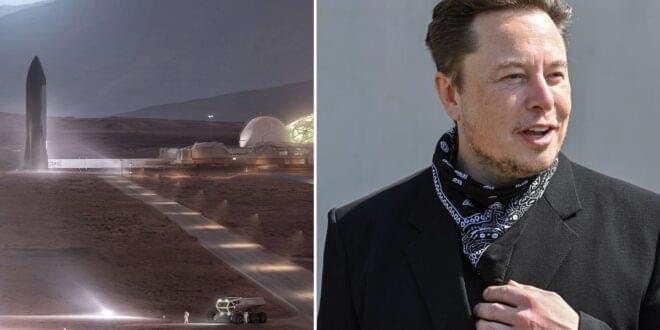Yale researchers have developed an mRNA vaccine that targets the antigens found in tick saliva in order to alert individuals to tick bites as well as prevent the tick from feeding correctly, thereby reducing its ability to transmit pathogens.


😃
A highly dexterous, human-like robotic hand with fingertip touch sensors can delicately hold eggs, use tweezers to pick up computer chips and crush drink cans. The hand could eventually be used as a prosthetic or in robots that use artificial intelligence to manipulate objects.
Weighing 1.1 kilograms, the hand is 22 centimetres long and made of steel and aluminium. Each finger is driven by three small motors that fit within the palm and move metal parts that act like tendons around a total of 20 joints. This enables the digits to tilt sideways, to flex back and forth and to fold, giving the hand a range of movements comparable to that of a human hand.
Uikyum Kim at Ajou University in South Korea and his colleagues, who built the hand, say it can hold an egg without cracking it, pour drinks and crush aluminium cans.

😀
JERUSALEM, Dec 11 (Reuters) — Israeli researchers said on Saturday they found that a three-shot course of the Pfizer/BioNTech (PFE.N), (22UAy. DE) COVID-19 vaccine provided significant protection against the new Omicron variant.
The findings were similar to those presented by BioNTech and Pfizer earlier in the week, which were an early signal that booster shots could be key to protect against infection from the newly identified variant.
The study, carried out by Sheba Medical Center and the Health Ministry’s Central Virology Laboratory, compared the blood of 20 people who had received two vaccine doses 5–6 months earlier to the same number of individuals who had received a booster a month before.

The US Navy announced it tested anti-submarine laser weapons in the Gulf of Aden — report.
#news #trending #currentevents.
Freedom over censorship, truth over narrative.
Follow us on Facebook: https://www.facebook.com/RTnews.
Follow us on TikTok: https://www.tiktok.com/@rt.news.
Follow us on Telegram: t.me/rtnews.
Follow us on Twitter: https://twitter.com/RT_com

Elon Musk, the billionaire CEO of Tesla, is defending himself once again against public criticism. It is time for Tesla CEO Elon Musk to answer to questions regarding his income tax bill.
“If you opened your eyes for two seconds, you would know that I will pay more taxes than any American in history this year.” Musk tweeted earlier this week.
Tesla CEO Elon Musk tweeted a reaction to Massachusetts Sen. Elizabeth Warren’s criticism of him as Time Magazine’s Person of the Year for not paying his taxes.
Viewers like you help make PBS (Thank you 😃). Support your local PBS Member Station here: https://to.pbs.org/DonateSPACE
It turns out that “nothing” is one of the most interesting somethings in all of physics. Signup for your free trial to The Great Courses Plus here: http://ow.ly/OOOp30beNyt.
Note: There is a correction in this video that has been addressed in the pinned comment below.
You can further support us on Patreon at https://www.patreon.com/pbsspacetime.
Get your own Space Time tshirt at http://bit.ly/1QlzoBi.
Tweet at us! @pbsspacetime.
Facebook: facebook.com/pbsspacetime.
Email us! pbsspacetime [at] gmail [dot] com.
Comment on Reddit: http://www.reddit.com/r/pbsspacetime.
Help translate our videos!
https://www.youtube.com/timedtext_cs_panel?tab=2&c=UC7_gcs09iThXybpVgjHZ_7g.
Previous Episode:
A documentary exploring how artificial intelligence is changing life as we know it — from jobs to privacy to a growing rivalry between the U.S. and China.
FRONTLINE investigates the promise and perils of AI and automation, tracing a new industrial revolution that will reshape and disrupt our world, and allow the emergence of a surveillance society.
This journalism is made possible by viewers like you. Support your local PBS station here: http://www.pbs.org/donate.
Love FRONTLINE? Find us on the PBS Video App where there are more than 250 FRONTLINE documentaries available for you to watch any time: https://to.pbs.org/FLVideoApp.
Subscribe on YouTube: http://bit.ly/1BycsJW
#ArtificialIntelligence #Automation #documentary.


Elon Musk has announced a new timeframe for his massive Mars project, and it is a lot closer than you would believe.
In an article published Monday, Musk said, ‘I’ll be surprised if we’re not landing on Mars within five years.
Musk, the 50-year-old SpaceX founder and CEO who was selected Time’s Person of the Year, has grandiose ambitions for Mars: a self-sustaining metropolis with solar-powered hydroponic fields where people may live indefinitely, 34 million miles from Earth.